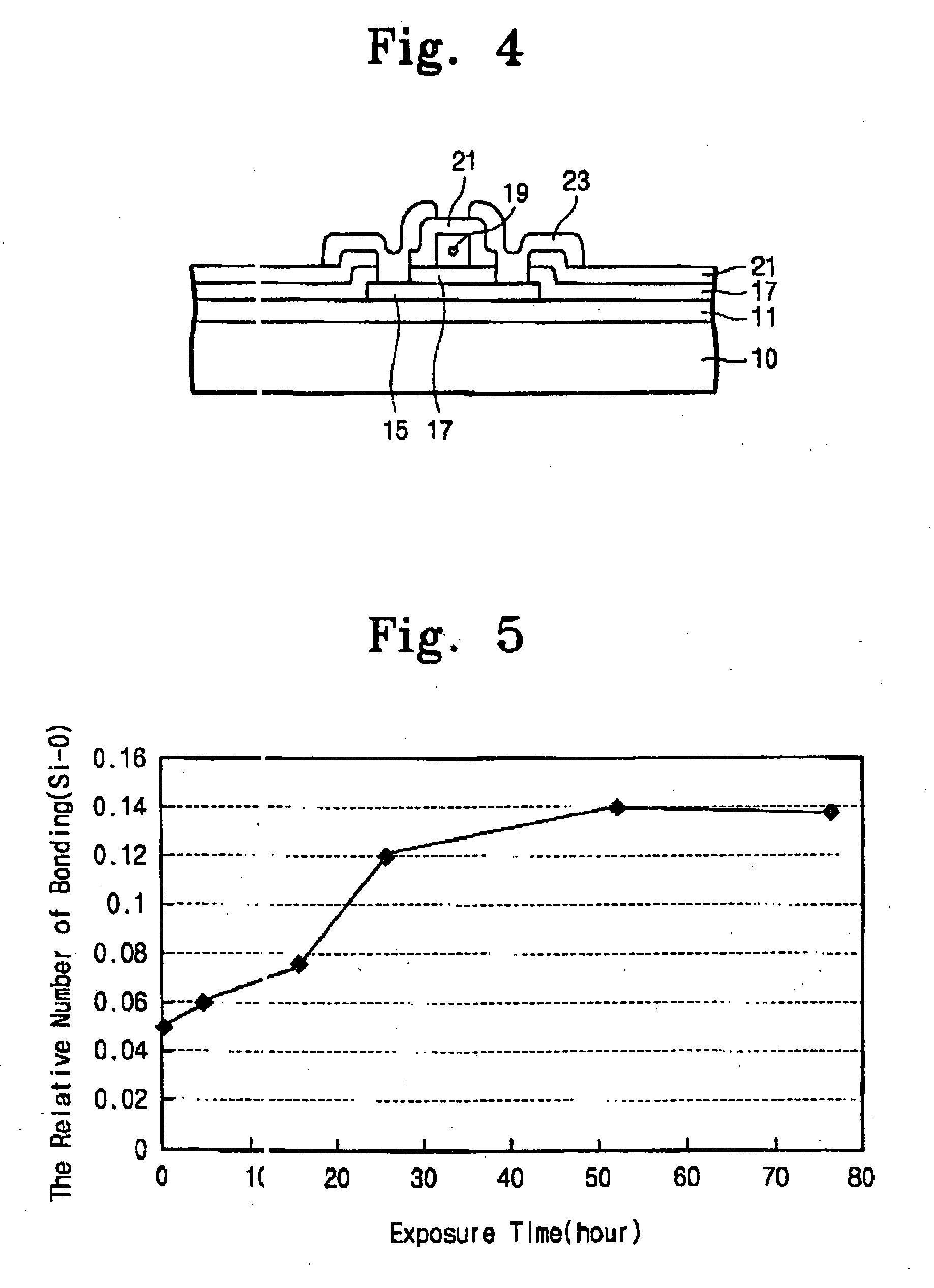Low temperature polycrystalline silicon type thin film transistor and a method of the thin film transistor fabrication
a technology of polycrystalline silicon and thin film transistor, which is applied in the direction of silicon, electrical equipment, semiconductor devices, etc., can solve the problems of reducing the average mobility of charge carriers, complicated process of forming transistors of driving integrated circuits, and inability to form integrated circuits on amorphous silicon thin films. , to achieve the effect of reducing the problem
- Summary
- Abstract
- Description
- Claims
- Application Information
AI Technical Summary
Benefits of technology
Problems solved by technology
Method used
Image
Examples
Embodiment Construction
[0027] Hereinbelow, a few embodiment of the top gate type polycrystalline silicon thin film transistor and a few embodiment of the method of forming the thin film transistor according to the present invention will be described.
[0028] Referring to FIG. 1, on the glass substrate (10), a blocking layer (11) is formed with silicon nitride and an amorphous silicon layer (13) is deposited on the blocking layer (11). The amorphous silicon layer (13) is formed by low temperature CVD under the temperature of 400° C.
[0029] Referring to FIG. 2, the substrate (10) deposited with amorphous silicon layer (13) is exposed to clean air or oxygen gas for at least 6 hours or more favorably 24 hours. in the mean time, oxygen atoms are diffused into the amorphous silicon layer (13′) and make loose bond with silicon atom and form a nature oxide layer at the surface of the amorphous silicon layer (13′). As the time pass, the number of silicon-oxygen bond increase but with decreasing ratio and finally st...
PUM
 Login to View More
Login to View More Abstract
Description
Claims
Application Information
 Login to View More
Login to View More - R&D
- Intellectual Property
- Life Sciences
- Materials
- Tech Scout
- Unparalleled Data Quality
- Higher Quality Content
- 60% Fewer Hallucinations
Browse by: Latest US Patents, China's latest patents, Technical Efficacy Thesaurus, Application Domain, Technology Topic, Popular Technical Reports.
© 2025 PatSnap. All rights reserved.Legal|Privacy policy|Modern Slavery Act Transparency Statement|Sitemap|About US| Contact US: help@patsnap.com



